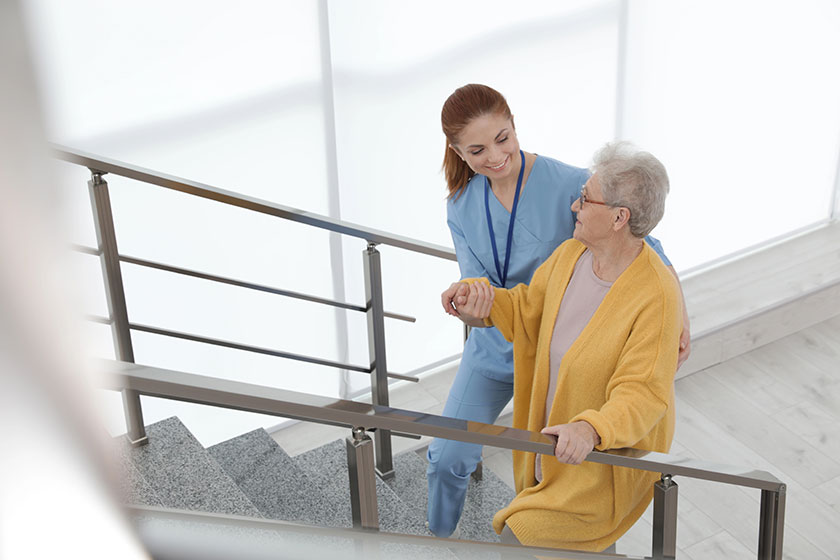When you or your loved one is considering a retirement community in Southlake, TX, safety is a paramount concern, especially for individuals with dementia. Staircase safety is crucial as it helps prevent falls and promotes a safer living environment. In Southlake, TX, communities dedicated to dementia senior living care take innovative steps to ensure that all residents can navigate staircases safely and confidently.
Thoughtful Design and Strategic Enhancements
The layout and design of a building play critical roles in guaranteeing safety for all residents. In Southlake’s dementia care communities, staircases are designed or modified to eliminate any features that might pose a risk. For example, shallow steps or excessively narrow staircases are restructured to create a more accessible path. These adjustments help in reducing the likelihood of missteps that could lead to falls.
Moreover, consistent with the focus on resident safety, additional handrails are installed along all staircases. These rails are not only strong and securely fastened but also ergonomically designed to fit the natural grip of an individual, making it easier for residents to hold on securely as they ascend or descend stairs.
Lighting and Visual Aids
Proper lighting is essential for people with dementia, who may struggle with vision impairments. Retirement communities in Southlake make sure that staircases are well-lit at all hours to provide maximum visibility. Beyond standard lighting, soft, non-glare lights are often installed to enhance visibility without overwhelming the senses.
Visual aids are another tool used to improve staircase safety. Steps might be painted in contrasting colors to help delineate where one step ends and another begins. This is particularly helpful for residents with vision difficulties, making it easier for them to navigate the stairs independently.
Innovative Solutions for Maximum Safety
Considering the unique challenges faced by individuals with dementia, some communities may choose to install technology-enhanced solutions like motion sensors. These sensors can trigger lights or alarms if a resident is using the stairs unassisted, alerting team members to provide support. Additionally, non-slip flooring is a standard feature, added to both the steps themselves and the landing areas to prevent slips.
For communities that emphasize comprehensive care, such as those in Southlake, stairlifts are often a popular addition. These devices allow residents to move between floors without the physical strain of climbing stairs, thus reducing the risk of falls significantly. The stairlifts are designed to be easy to operate and can accommodate various mobility levels, guaranteeing all residents have access to safe and convenient movement throughout the building.
Engagement and Physical Wellness
While physical modifications and technological enhancements are crucial, encouraging physical wellness is also a vital part of enhancing safety. Communities often link staircase safety with broader health and fitness programs tailored to the abilities of residents with dementia. These programs focus on improving balance, strength and coordination, which are critical in preventing falls.
Community and Support
Beyond the physical aspects of staircase safety, there is a strong emphasis on community support. Activities coordinators within the community make sure that all residents have ample opportunities to engage in activities and events that encourage movement and interaction in safe and supervised settings. This approach not only improves physical health but also fosters a sense of belonging and community among residents, which is crucial for mental and emotional well-being.
Choosing a dementia or Memory Care community in Southlake, TX, means prioritizing safety and comfort for your loved one. The thoughtful staircase safety measures implemented by these communities reflect a deep understanding of the needs of individuals with dementia.
By focusing on safe design, continuous improvement and resident engagement, these communities provide a secure environment where independence is encouraged and supported. Whether through better lighting, enhanced physical layouts or comprehensive health programs, the goal remains the same: to guarantee every resident feels safe and valued within their living space.





